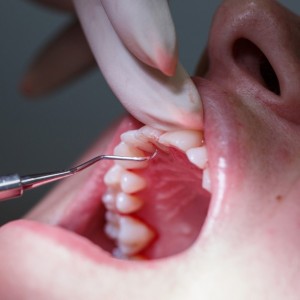
Gengival recession: Laterally Positioned Flap (LPF) or Coronally Advanced Flap (CAF) ADVANCED FLAP (CAF)
Giulia Palandrani
Gingival recession (GR) may be considered a gingival and/or alveolar mucosal defect with functional repercussion since progressive GR is caused by loss of attachment and may clinically occur associated with absence of keratinized gingiva. Several procedures have been reported for the surgical correction of GR. Among the pedicle flaps, the laterally positioned flap (LPF) and the coronally advanced flap (CAF) present the possibility to cover the recession.
The laterally sliding flap or LPF was long considered the gold‐standard technique for treatment of a single GR when an adequate amount of keratinized tissue was available lateral to the recession site.
The CAF is one of the most reliable techniques for the treatment of single GRs with the possibility of achieving complete root coverage (CRC). The objective of this report was to evaluate the results after 1 and 5 years, comparing the long‐term efficacy of single‐stage LPF and CAF techniques in the treatment of localized maxillary GR defects.
MATERIALS AND METHODS
This study is a randomized, prospective,controlled clinical trial. Thirty‐six patients (10 men and 26 women), with average age of 34 ± 7 years, were included with the following incusion criteria: adult patients with no contraindications for periodontal surgery, exhibiting the presence of Miller Class I GRs in maxillary incisors, canines, or premolars, probing depth (PD) < 3 mm without bleeding on probing (BOP), presenting tooth vitality and absence of caries or restorations in the areas to be treated. All individuals were subjected to initial periodontal therapy and trained to use a soft toothbrush and to eliminate habits related to the etiology of the recession. Each defect was randomly assigned to one of the two treatment: CAF (n = 18) or LPF (n = 18). Following surgery, all patients were seen weekly during the first 3 months and biweekly for the next 3 months. Then, the patients were seen after every 6 months up to 5 years. Recession height (RECH), width of keratinized tissue (WKT), probing depth (PD), vertical clinical attachment level (VAL), visual plaque score (VPS), and bleeding on probing (BOP) were evaluated and compared
RESULTS
No statistically significant differences were observed between groups in any of the clinical parameters at baseline. Intragroup comparisons revealed that statistically significant changes from baseline were found for RECH for both the CAF and LPF groups. Measurements of change of RECH demonstrated that LPF resulted in 96.1% and 91.6% mean RC (root coverage), and CAF resulted in 94.7% and 82.1% mean RC after 1 and 5 years, respectively. The results demonstrated that the group treated with LPF presented significantly increased WKT over the CAF procedure, after 1 (4.4 ± 1.5 mm versus 1.9 ± 0.7 mm) and 5 years of healing (4.7 ± 1.5 mm versus 1.7 ± 0.6 mm). CAF group had a higher percentage of complete root coverage (CRC) after 1 year and the lowest percentage of complete RC after 5 years. CRC was accomplished in 88.88% (15 out of 18) of the treated cases in the CAF group after 1 year and 56.25% (nine out 16) after 5 years. In the LPF group, CRC was observed in 77.78% (14 out of 18) of cases after 1 year and 68.76% of cases (11 out 16) after 5 years. The longitudinal maintenance of RC following CAF is controversial. Both groups exhibited similarly reduced BOP and VPS scores.
CONCLUSIONS
This study demonstrated that LPF and CAF procedures are two surgical techniques that can be used for the treatment of GR; however, LPF results in significantly increased WKT in the treated areas and greater stability of RC after 5 years.
For additional informations: Single‐stage advanced versus rotated flaps in the treatment of gingival recessions: A 5‐year longitudinal randomized clinical trial
 Related articles
Related articles
Periodontology 30 October 2025
To update the competences and learning outcomes and their evaluation, educational methods and education quality assurance for the training of contemporary specialists in periodontology
Periodontology 10 October 2025
Continuous professional development (CPD) in Periodontology refers to the overall framework of opportunities that facilitate a life-long learning practice, driven by the learner-practitioner and...
Periodontology 10 September 2025
To update the findings of a systematic review from the year 2016 on the evidence for the accuracy and potential benefits of cone beam computed tomography (CBCT) in periodontal diagnostics.
Periodontology 27 August 2025
The purpose of this study was to evaluate the views, knowledge and preferences of a large sample of practising dentists in periodontics, focusing specifically on the treatment of gingival recessions,...
Aggressive periodontitis is a destructive disease characterized by the following: the involvement of multiple teeth with a distinctive pattern of periodontal tissue loss; a high rate of disease...
 Read more
Read more
Much like EMTs rushing to the scene after an accident, stem cells hurry to the site of a skull fracture to start mending the damage. A new finding has uncovered the signaling mechanism that triggers...
Products 05 November 2025
SimplyTest has launched a groundbreaking saliva-based test to detect high-risk strains of oral human papillomavirus (HPV), a major cause of oropharyngeal cancers.
News 05 November 2025
Perimetrics, Inc., a dental technology company pioneering quantitative diagnostics, announced today that the U.S. Food and Drug Administration (FDA) has granted clearance for the InnerView...
News 05 November 2025
On October 15, open enrollment for Medicare began nationwide. Hundreds of thousands of seniors in New Jersey will once again face the challenge of finding the right Medicare coverage, including the...
Digital Dentistry 04 November 2025
Digitalisation is an expanding field in dentistry and implementation of digital teaching methods in dental education is an essential part of modern education.















